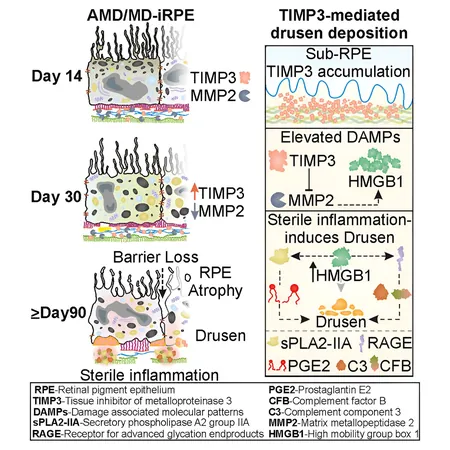
Breakthrough Discovery in Age-Related Macular Degeneration: A Protein as a Potential Preventive Therapeutic Target
2024-10-02
Introduction
Age-related macular degeneration (AMD) has long been recognized as a leading cause of irreversible vision loss, particularly among older adults in the United States. Despite the availability of certain treatments, the root causes of this debilitating condition and effective preventative therapies continue to evade researchers.
However, a groundbreaking study published in the journal *Developmental Cell* may pave the way for new, more effective treatments by unveiling critical insights into the cellular mechanisms underlying AMD.
Research Insights
Lead author Ruchira Singh, Ph.D., affiliated with the University of Rochester's Flaum Eye Institute and Center for Visual Sciences, emphasized the limitations of current AMD treatments. “These options often come with significant side effects and insufficient effectiveness. Our research is dedicated to uncovering novel therapeutic targets that could potentially stop the disease in its tracks,” Dr. Singh stated.
This recent study represents a significant departure from earlier research methods, utilizing human stem cells to better model AMD, directly addressing the shortcomings of animal models. By investigating genes linked to both AMD and rarer inherited macular dystrophies, the research team identified a specific protein that plays a critical role in the early progression of AMD.
Role of TIMP3
Central to the study is the retinal pigment epithelium (RPE), a vital layer of cells located at the back of the eye. Over time, deposits of lipids and proteins known as drusen accumulate in the RPE, serving as an early sign of AMD. The research unveiled that a protein called tissue inhibitor of metalloproteinases 3 (TIMP3) is produced in excessive amounts in those affected by AMD.
TIMP3 functions to inhibit the activity of enzymes critical to maintaining eye health, known as matrix metalloproteinases (MMPs). When MMP activity is hindered, it results in the overproduction of another enzyme that contributes to inflammation and the further accumulation of drusen.
Potential Treatment Strategy
In a promising development, the researchers utilized a small molecule inhibitor to obstruct the inflammatory enzyme's activity, successfully reducing drusen formation in their human stem cell model. This finding suggests that targeting the pathway influenced by TIMP3 could represent a groundbreaking strategy for AMD prevention.
Conclusion
Dr. Singh reflects on the implications of the research, stating, “The cellular pathways involved in drusen formation are crucial drivers of AMD progression. By preventing the accumulation of drusen, we might successfully avert the disease from reaching advanced stages that lead to vision loss. This research heralds a brighter path towards new treatments that could greatly improve the lives of millions suffering from AMD.”
As the global population ages, the potential to prevent or significantly slow the progression of AMD presents an urgent and vital avenue for medical research. This study not only offers hope for those at risk but also encourages further exploration into the underlying mechanisms contributing to this widespread vision impairment disorder. Stay tuned as we continue to monitor developments in AMD research that could reshape vision care for future generations!





 Brasil (PT)
Brasil (PT)
 Canada (EN)
Canada (EN)
 Chile (ES)
Chile (ES)
 España (ES)
España (ES)
 France (FR)
France (FR)
 Hong Kong (EN)
Hong Kong (EN)
 Italia (IT)
Italia (IT)
 日本 (JA)
日本 (JA)
 Magyarország (HU)
Magyarország (HU)
 Norge (NO)
Norge (NO)
 Polska (PL)
Polska (PL)
 Schweiz (DE)
Schweiz (DE)
 Singapore (EN)
Singapore (EN)
 Sverige (SV)
Sverige (SV)
 Suomi (FI)
Suomi (FI)
 Türkiye (TR)
Türkiye (TR)